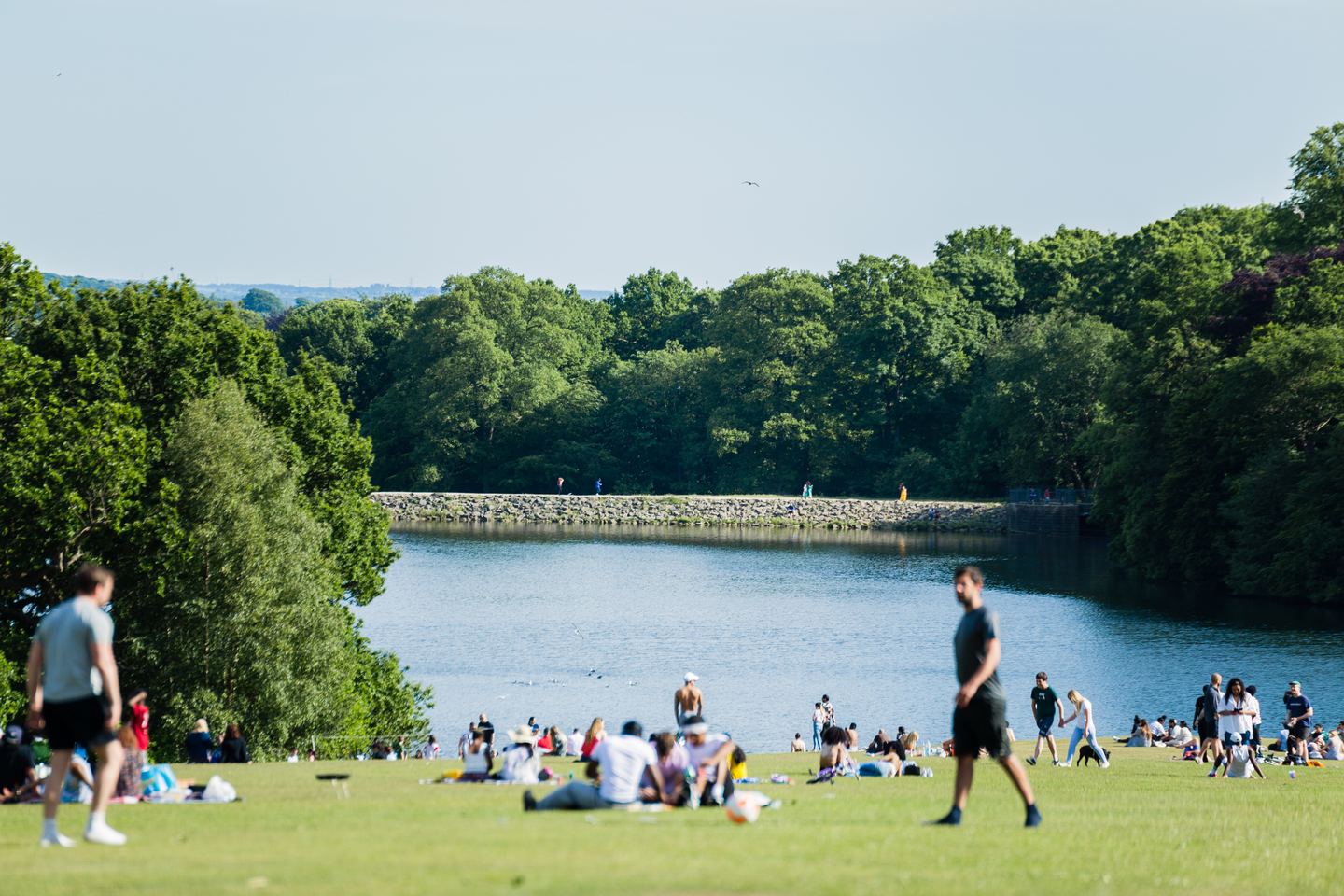Introduction, Article
Green and Blue Spaces

How They Influence Health and Life
The Urban Environment
Living conditions in Europe have undergone drastic changes over the past centuries, particularly from the 1800s to the present day. According to the European Commission, it is estimated that 85% of the population in the European Union today lives in urban areas [1].
While cities offer advantages like community and accessibility to resources, they also expose individuals to various physical and psychological stressors, including noise, air pollution, and physical inactivity [2].
The Burden of Urban Life
In Stanley Milgram’s work on urban psychology, he emphasized the overwhelming impressions, anxiety, powerlessness, and mental exhaustion caused by the fast-paced urban lifestyle [3], an observation he shared with the sociologist Georg Simmel in his descriptions of the modern city in the early 1900s [4]. Even then, Milgram and Simmel described symptoms of exhaustion resembling what we call burnout today. Numerous studies have since supported the notion that urban environments can weaken overall well-being.
The Healing Power of Nature
Contrary to the challenges of urban life, mounting evidence suggests that nature positively affects human health. Kaplan [5] describes that nature has a restorative effect and, in their research, has distinguished four reasons why nature is positive for mental health:
- Being away: Nature offers a sense of transportation to a different world.
- Extent: Nature's vastness instills a feeling of freedom.
- Fascination: The captivating and sensory-rich qualities of nature stimulate interest.
- Compatibility: Nature fosters a sense of belonging and meets individuals' needs.
These benefits are not limited to wilderness areas; even green and blue spaces within cities can produce similar positive effects if they meet the four criteria mentioned above [6]. The health impact of green and blue spaces can be summarized in three broad areas:
1. Reduction of harm from air pollution, noise, and heat.
2. Restoration of attention and stress reduction.
3. Improvement of physical activity levels and social harmony.
Reconnecting with Nature
While the concept of nature as a source of recovery is nothing new in human history, as it was already recommended by Hippocrates, our modern urbanized lifestyles have distanced us from the natural world. As indoor living becomes more prevalent, the importance of green and blue spaces for human well-being has gained prominence [7].
Additionally, scientific evidence supports the recommendation of spending a minimum of 120 minutes per week in nature, complementing the World Health Organization's advice of 150 minutes of physical activity [8]. So put on your shoes, spend some time in nature today and experience its benefits firsthand!
Author: Luyolo Mazomba-Karlsson, Region Västerbotten
Sources
[1] Pesaresi, M., Melchiorri, M., Siragusa, A., & Kemper, T. (2016). Atlas of the human planet–Mapping human presence on earth with the global human settlement layer. JRC103150. Publications Office of the European Union. Luxembourg (Luxembourg): European Commission, DG JRC. Available at: https://ec.europa.eu/jrc/en/publication/eur-scientific-and-technical-research-reports/atlas-human-planet-mapping-human-presence-earth-global-human-settlement-layer.
[2] WHO. (2021). Urban Health. [Online]. Available: WHOhttps://www.who.int/news-room/fact-sheets/detail/urban-health. [2022, September 19]
[3] Milgram S., The experience of living in cities. Science 167, 1461–1468 (1970).
[4] Simmel, G (1981). Hur är samhället möjligt?. Göteborg: Bokförlaget Korpen.
[5] Kaplan, R., & Kaplan, S.(1989).The experience of nature: A psychological perspective. Cambridge University Press.
[6] Ottosson, M., & Ottosson, Å. (2006). Naturen som kraftkälla. Naturvårdsverket.
[7] Mariya Geneshka, Peter Coventry, Joana Cruz, Simon Gilbody (2021). Relationship between Green and Blue Spaces with Mental and Physical Health: A Systematic Review of Longitudinal Observational Studies. International Journal of Environmental Research and Public Health, 2021, Volume 18, Issue 17, Page 9010
[8] Mathew P. White, Ian Alcock, James Grellier, Benedict W. Wheeler, Terry Hartig, Sara L. Warber, Angie Bone, Michael H. Depledge, Lora E. Fleming. (2019). Spending at least 120 minutes a week in nature is associated with good health and well-being. Scientific Reports, 2019, Volume 9
